Microsoft Surface Pro 2 Review
by Anand Lal Shimpi on October 21, 2013 12:01 AM EST- Posted in
- Tablets
- Microsoft
- Mobile
- Surface
- Surface Pro 2

When Microsoft introduced its first Surface devices last year, it did so in a staggered fashion. Surface RT showed up first, then four months later Surface Pro went on sale. Despite sharing a lot of the same DNA, the response to Surface Pro was much better than what we saw with Surface RT. While Surface RT suffered a lot from being a new platform that lacked the support of decades of Windows applications, Surface Pro had no such issue.
Instead, Surface Pro offered the promise of a tablet that could potentially replace your notebook and desktop as well. Microsoft’s strategy with Surface Pro mimicked the market transition we saw years earlier. The notebooks that replaced desktops over the 2000s did so by being able to work as both notebooks or desktops. Similarly, Microsoft hoped that Surface Pro could act as both a tablet and a notebook for those users who didn’t want to carry two devices.
By and large, Microsoft was successful in achieving that vision. Although as with all devices that attempt to fulfill multiple roles, Surface Pro presented a set of tradeoffs. It wasn’t as portable and didn’t last as long on a single charge as a conventional ARM based tablet. It also didn’t have the same keyboard or in-lap experience as a PC notebook. You got a compromised experience on both sides of the fence. Just as with Surface 2, Microsoft is committed to a more aggressive update cadence to its Surface Pro hardware as well. Here we are, almost 9 months since availability of the original Surface Pro, reviewing its successor.
Unlike Surface 2, Surface Pro 2 shows almost no signs of change on the outside. It reminds me of the pre-iPhone/iPad era where expecting a dramatic chassis redesign a year after introduction was considered ludicrous. Surface Pro 2 keeps the exact same finish, dimensions and weight as the original Surface Pro.
It’s unfortunate given how much thinner and lighter the device could be this time around. I suspect Microsoft has a three year plan for Surface Pro. It could move to a thinner design this year and drop performance by going to a 6W Haswell SKU, keep performance the same but pay a thermal penalty with a 15W Haswell or wait until Broadwell next year to shrink the chassis (hopefully without much of an associated performance reduction). I can understand why Microsoft chose the latter, it’s still just frustrating as I would’ve loved a thinner/lighter Surface Pro.
I also lament Microsoft’s decision to update the VaporMg finish on Surface 2 but not on Surface Pro 2. I really like the new finish both in feel and in color. Surface 2’s resistance to picking up fingerprints is an added bonus on that front. Alas, it’s an update that I’m guessing the Surface Pro lineup won’t get until next year.
Surface Pro 2 also retains the same front and rear facing cameras as its predecessor, both 1.2MP units and it doesn’t get the new 3.5/5MP sensors from Surface 2.
You still get a bundled Wacom active digitizer with Surface Pro 2, just like with the original. I’m hardly a creative professional, but from what I’ve experienced with the pen it’s really a great addition for those folks who are. I’ll point you at none other than Gabe from Penny Arcade who did a great post on an artist’s perspective of using the Surface Pro’s stylus. Spoiler alert: he likes it a lot. If I illustrated for a living, I probably would too.
Surface Pro 2 inherits the same kickstand and branding decisions as Surface 2. As I mentioned in my Surface 2 review, the new 2-stage kickstand is awesome and a huge improvement over its predecessor. The kickstand now opens at 24 and 40-degree angles, the latter enables more comfortable use when you’re not typing at a desk. The new kickstand also ditches the Windows 8 logo in favor of the Surface logo across the back.
Finally, Surface Pro 2 does get the new 1080p panel from Surface 2 (albeit a brighter implementation). There’s no improvement in resolution compared to the original Surface Pro, but color accuracy is a lot better.
I did notice an odd display corruption issue on Surface Pro 2 when waking up from sleep (pictured above). Resetting the device or sometimes just doing another sleep/wake cycle was enough to fix it. Microsoft tells me it’s aware of the problem and plans to issue an update shortly to address it. We only got review samples a few days prior to the NDA lift, I get the impression that it was a lot of work to get final hardware out the door in time for this launch. Update: Microsoft traced the issue back to a later revision of an Intel graphics driver. After release, a Surface Pro 2 update rolled back to an earlier optimized driver that no longer exhibits the display corruption on wake issue.
Internally we see where Microsoft spent most of its time updating Surface Pro. It all starts with an upgrade to Haswell. Surface Pro 2 features Intel’s Core i5-4200U, a dual-core 1.6GHz 15W Haswell part with Hyper Threading, 3MB of shared L3 cache, and a max turbo frequency of 2.6GHz. Just like last time, I had no issues hitting 2.6GHz on Surface Pro 2. I would see 2.3GHz far more frequently however.
As Surface Pro 2 is rather thick by Ultrabook standards, you get the full performance of the 4200U. I ran a multithreaded Cinebench 11.5 test on Surface Pro 2, comparing it to Apple’s 13-inch 2013 MacBook Air under Windows 8. The two deliver identical performance, just in different form factors:
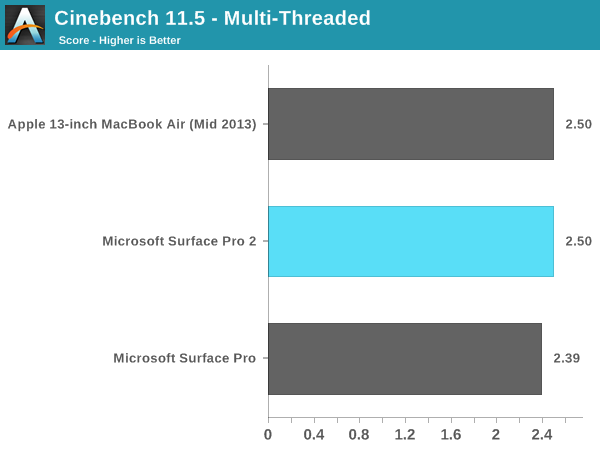
The 4200U is nearly identical to the base CPU you get in the new 2013 MacBook Airs, the only difference being that you get Intel’s HD 4400 graphics vs. HD 5000. Apple’s obsession with graphics performance explains the difference, although it’s disappointing to see Microsoft not sharing the same obsession. To Microsoft’s credit the difference between Intel’s HD 5000 and HD 4400, when constrained by a 15W TDP, just isn’t very large. The real benefit to going with HD 5000 over HD 4400 has to do with power consumption, since you can get similar performance at lower frequencies/voltages thanks to a doubling of the number of EUs in HD 5000.
It’s not just the CPU that’s changed this time around, Microsoft did extensive work under the hood of Surface Pro 2 to further reduce power consumption. Haswell ULT supports LPDDR3, a feature that Microsoft chose to take advantage of in pursuit of lowering power consumption. All other components on the motherboard are also optimized for power consumption. The result is a device that looks like and is cooled similarly to its predecessor, but is appreciably cooler/quieter in operation. While the original Surface Pro would spin its fans up on a regular basis, Surface Pro 2 is far more hesitant to do the same thing. In what I’d consider to be light to medium tablet use, Surface Pro 2 behaves like a passively cooled device. When the fans do ramp up, they aren’t any louder than before as far as I can tell.

USB3 transfers to an internal mSATA SSD
Just like the original, Surface Pro 2 retains a full SSD rather than an eMMC solution. We’re still dealing with an mSATA based drive here, but Microsoft expanded the available capacity options. The combination of DRAM/SSD/price options are in the table below:
| Microsoft Surface Pro 2 Storage Configurations | ||||||||||
| SSD | 64GB | 128GB | 256GB | 512GB | ||||||
| LPDDR3 Configuration | 4GB | 4GB | 8GB | 8GB | ||||||
| Price | $899 | $999 | $1299 | $1799 | ||||||
The most interesting options are unfortunately the more expensive models. I think the sweet spot is likely the 8GB/256GB version, which also happens to be how my review sample was configured. Unfortunately the LPDDR3 is soldered on board (as with all modern Ultrabooks) so that’s not user upgradeable. The SSD is technically serviceable, but there’s a ton of risk associated with doing so as you have to take apart your Surface Pro 2 to do so. Once again Microsoft refuses to equip Surface Pro with a Thunderbolt port, which would help greatly in dealing with high performance storage expansion concerns. There is still a USB 3.0 port at least.
Surface Pro 2 is compatible with all of the new dock accessories, including the new touch and type covers. I went through the improvements to both of those in our Surface 2 review already, but in short they are great. I still prefer the new type cover as I can type a lot faster on it, but the new touch cover is significantly better than its predecessor. Neither is included in the cost of a Surface Pro 2, so factor in another $119 - $129 depending on which cover you end up with. I noticed the same trackpad disappearing issues on Surface Pro 2 as I did on Surface 2, Microsoft claims a fix is in the works.
| Microsoft Surface Pro Comparison | ||||||||
| Surface Pro 2 | Surface Pro | |||||||
| Dimensions | 10.81 x 6.81 x 0.53" | 10.81 x 6.81 x 0.53" | ||||||
| Display | 10.6-inch 1920 x 1080 w/ Improved Color Accuracy | 10.6-inch 1920 x 1080 PLS | ||||||
| Weight | 2.0 lbs | 2.0 lbs | ||||||
| Processor | Core i5-4200U with HD4400 Graphics (15W Haswell ULT) |
Core i5-3317U with HD4000 Graphics (17W Ivy Bridge) |
||||||
| Cameras | 1.2MP/1.2MP (front/rear) | 1.2MP/1.2MP (front/rear) | ||||||
| Connectivity | WiFi | WiFi | ||||||
| Memory | 4GB or 8GB LPDDR3 | 4GB | ||||||
| Storage |
64 or 128GB (4GB RAM) 256GB or 512GB (8GB RAM) |
64GB or 128GB | ||||||
| Battery | 42.0 Wh | 42.0 Wh | ||||||
| Starting Price | $899 | $799 | ||||||
Surface Pro 2 ships with Windows 8.1 Pro x64. Since there's no connected standby 64-bit version of Windows 8/8.1 yet, Surface Pro 2 ships without the feature. It also continues to behave more notebook like in the sleep/wake sense as a result. There's a delay between when you press the power/lock button and when you'll see the tablet respond as the system comes out of its sleep state. Ironically Surface Pro 2 comes with nothing more than a link to try Office 2013, while Surface 2 comes with a free copy of the Home & Student edition.


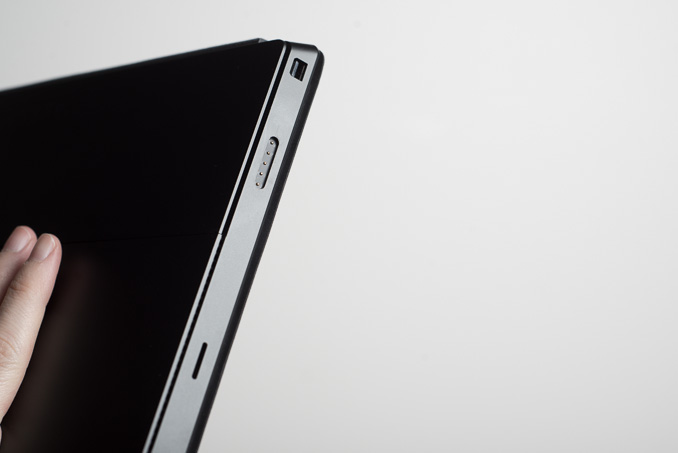
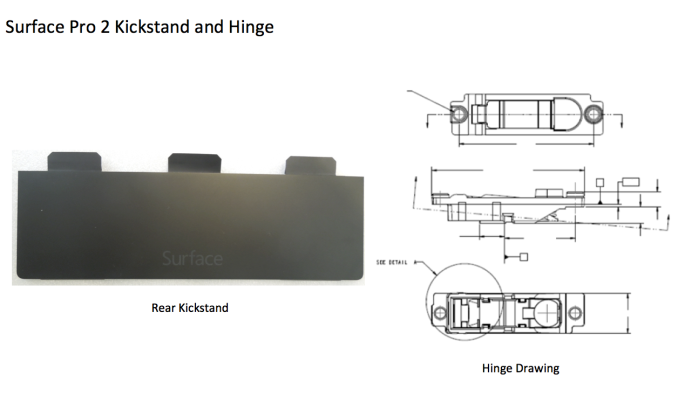
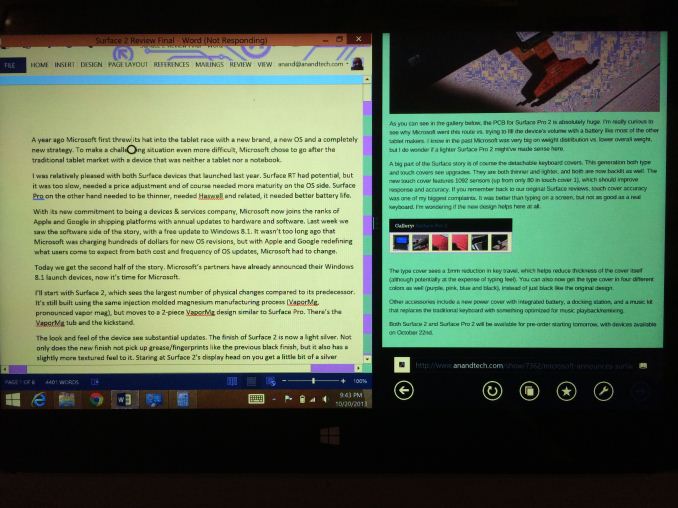


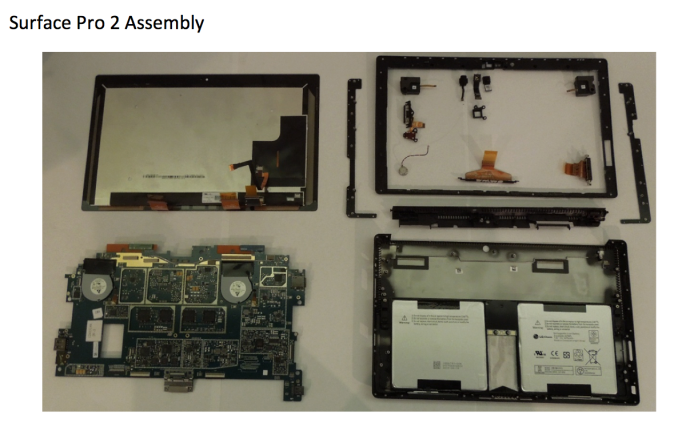
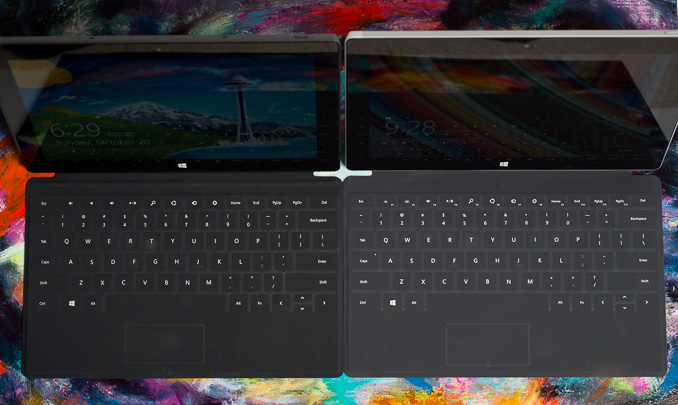








277 Comments
View All Comments
aliase - Monday, October 21, 2013 - link
wow, you guys actually tear-down it before ifixit did.unkinected - Monday, October 21, 2013 - link
I've been trying forever to find any info on connected standby. According to a MS whitepaper (http://msdn.microsoft.com/en-us/library/windows/ha... page 7), Windows already supports this for ALL platforms:"All client versions of Windows support Connected Standby on capable hardware—both ARM and x86/x64 systems."
So shouldn't that mean the Surface Pro 2 already supports this? Unless the hardware is not up to snuff, in which case no software/firmware update is ever going to address this. There's no clear documentation anywhere online, was hoping you guys could clear it up.
unkinected - Monday, October 21, 2013 - link
And further to the point...with Connected Standby enabled, I'm wondering how much battery life I get when idle.synth0 - Monday, October 21, 2013 - link
Dear Anand,I generally like your reviews, however I fail to understand your slashing remarks regarding the battery life of the new Surface Pro.
Regarding the battery life, you say, and I quote:
"...seems only good for around 6 – 7 hours on a single charge..."
"Battery life is still not up to snuff with traditional ARM based tablets"
I just can't grasp how can an adequate reviewer compare a desktop designated CPU (designed for ULTRABOOKS) to a ARM devices (which are primarily designed for PHONES), and EVEN so: Surface manages to give 85% of battery life of Galaxy Tab 3, while providing 5-10 times faster CPU & GPU performance (really!).
Answers, please...!
YuLeven - Wednesday, October 23, 2013 - link
I agree with your statement.This tablet has a full blown Intel haswell chip clocking inside. Whats the point in comparing it to weak, small ARM core's battery life?
aritai - Monday, October 21, 2013 - link
Ditto here. Even better with a 3rd (or even a 4th or a 5th) screen using a usb3 hub plus a video adapter.http://www.amazon.com/gp/product/B0086359SG
because "it's also (just) a (high performance) PC"
ccd2 - Monday, October 21, 2013 - link
I'm not sure MS has gotten used to the speed with which tech devices like convertibles are improving. The Pro was groundbreaking last year. This year it has competition. Next year, the competition will be even stiffer. Broadwell has the potential to be a game changer for the OEM that puts it all together. My thought is that Dell could be the big winner. The XPS 12 was been a nifty idea in need of better hardware. It's already a pretty decent laptop, just not a compelling tablet. Make the XPS 12 thinner and lighter and it might be as good a compromise as anything out there. And that does not take into account what Sony or someone else will do with Broadwell. MS needs to look at Google and the reasons for its success in its devices so far: aggressive improvements coupled with aggressive pricing. The Surface Pro 2 shows that MS has not yet learned that lesson.Will Aitchison - Monday, October 21, 2013 - link
I'm really curious to see how the Dell Venue 11 Pro will stack up against the Surface Pro 2 in terms of build quality and pricing when it comes out in a few weeks. I know it's a busy time of the year for everybody but I really hope somebody at Anandtech gets a chance to review it.I'm holding my breath for more configurability - I'm okay with a 128GB SSD, but I wouldn't want to settle with less than 8GB ram. I also think they may have made the right choice with their choice of the Y sku i5's. Hopefully they can offer up some strong competition - I'm really interested to see what they come up with.
kyuu - Monday, October 21, 2013 - link
Amazon currently has 3 of the Venue Pro 11 SKUs listed: http://www.amazon.com/s/ref=nb_sb_noss?url=search-...It looks to start at $550 for the model with an Atom. Moves up to $650 for the Pentium, then $850 for the model with a Core i5. There's supposed to be a Core i3 option as well, which I'd guess will fall in at the $750 mark, given the way the pricing is structured. Atom model comes with 2GB of RAM, all the others with 4GB.
So you're not going to get better specs, and the Core i5 model is only $50 cheaper. I'd pay $50 more for the better chassis and accessories, myself. It is interesting if you're looking for a cheaper tab that doesn't use Atom (with the Pentium and Core i3 options).
Will Aitchison - Monday, October 21, 2013 - link
Kudos for finding pricing information, I had been looking earlier and had not found it. I agree with your sentiment about paying a little extra for the premium build quality that MS has been delivering. It also appears that Dell is charging extra for the stylus, effectively bringing the two devices close to the same price point if that functionality is important to you.I still find myself hoping that some competing company can actually deliver the product I'm really looking for. Microsoft is so infuriatingly close with the Pro 2, but I can't help but feel they did not iterate the device enough this round, and it needs one more revision. For the premium price point it's difficult to make the investment in something which doesn't feel quite ready.
As an aside, a big part of why I'm interested in the Venue 11 Pro is the Transformer style keyboard and power dock, although this is definitely a matter of personal preference.